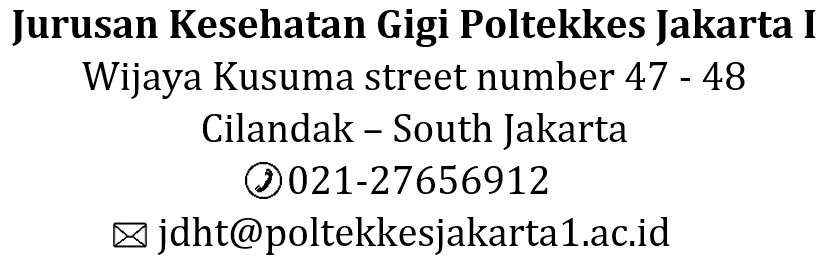AFFECTING FACTORS DENTAL AND ORAL HYGIENE STATUS IN SCHIZOPHRENIA
Keywords:
Schizophrenia, Dental and Oral Hygiene StatusAbstract
Background: Schizophrenia sufferers generally have poor oral hygiene status, this is because schizophrenic sufferers experience cognitive limitations and the ability to think rationally, resulting in an inability to perform oral hygiene. Research that explores external factors related to dental and oral hygiene status in schizophrenia is still very limited. The aim of this study was to analyze the factors that influence dental and oral hygiene status in schizophrenia. Method. This research is an analytical observation with a cross sectional approach in the work area of ??the Aceh Mental Hospital. The population in this study was all health workers in the schizophrenia room at the Aceh Mental Hospital, totaling 135 people. The sample was taken by purposive sampling, totaling 57 people, the sample size was determined using the TaroYamane formula. Results. This research shows that the level of knowledge and attitude of room health workers is in the good category, but the dental and oral hygiene status of schizophrenic sufferers is still in the poor category, namely 51.3% and 52.3% with a P value > 0.05 which shows that despite their knowledge and The attitude of health workers is in the good category but is not reflected in the dental and oral hygiene status of schizophrenia sufferers. Conclusion. There was no significant relationship between the knowledge and attitude of health workers in the room and the status of dental and oral hygiene in schizophrenia patients.Downloads
Download data is not yet available.
Published
2024-10-16
How to Cite
Wirza, W., & Febriani, H. . (2024). AFFECTING FACTORS DENTAL AND ORAL HYGIENE STATUS IN SCHIZOPHRENIA. JDHT Journal of Dental Hygiene and Therapy, 5(2), 1796–179. https://doi.org/10.36082/jdht.v5i2.1950
Issue
Section
Articles
Copyright & Licensing
Copyright (c) 2024 wirza

This work is licensed under a Creative Commons Attribution-ShareAlike 4.0 International License.
















